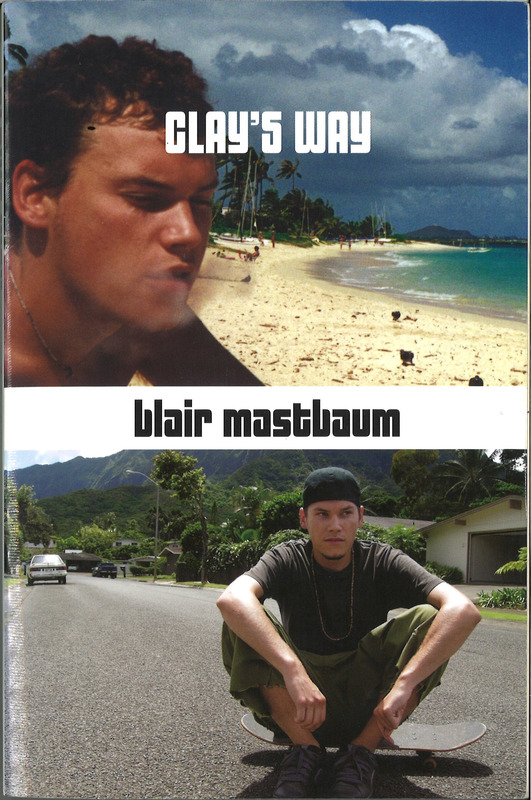Clay's Way
Summary
A closeted white Hawaiian teenager named Sam becomes deeply infatuated with a skate shop employee and drug dealer named Clay, who is dating another girl named Tammy. However, as he begins spending more time around Clay and imitating his lifestyle, he becomes frustrated with several of Clay’s traits - such as how his desire to be accepted prevents him from admitting he likes Sam - that culminates in him having sex with another man while camping on a hippie beach. This then leads to Clay trying to drown himself and going on a “‘vision quest” after he wakes up and temporarily experiences a complete change in personality that the others assume is due to shock (Mastbaum 191). During Clay’s absence, Sam attends a party where he announces that he and Clay are boyfriends and that Clay doesn’t care about Tammy. Clay gets angry with Sam when he returns and hears about what he did and punches him in public. Afterwards, Sam goes out to sea in a kayak at night, where he disposes all the poems he wrote about Clay.
Analysis
Clay’s Way has been compared to The Catcher in the Rye by several people, and one prominent connection between the two books is their criticism of “phoniness” and inauthenticity. One example is at the end of the book, where Sam taking on Clay’s mannerisms at the party ends badly, with Tammy confronting and then “beaming” Clay out of him. Another example is the way Clay and Sam differ in how they approach their sexuality. While Sam is closeted in the beginning of the book, with only his best friend’s older sister knowing he is gay initially, he approaches the fact that he is gay “with extreme matter-of-factness” (Fraina). On the other hand, Clay “is completely comfortable in his own skin except for his [inability] to acknowledge his homosexuality” (Fraina). And this inability is what stops him and Sam from getting together when Sam announces they’re boyfriends at the party and he accuses him of ruining his life.
Cultural context
Just over a decade prior to this book being published, in 1993, same-sex marriage was legalized in Hawaii. Sasha Iseenberg, the author of "The Engagement: America’s Quarter-Century Struggle Over Same-Sex Marriage”, noted that “‘the first real political conflict over same-sex marriage took place in Hawaiʻi in the 1990s’” (Harriman-Pote). This is important because a Goodreads review by Stacy Helton guesses this novel is set in the 1990s, which would explain Clay’s inner turmoil with accepting the fact he’s gay in the story.
There is some discussion about how Sam is shunned by other Hawaiian locals due to his race, which ties into Hawaii’s history with colonization. Something else to note is that at least one reviewer, Kealli Ballao, has criticized the novel for not being an entirely accurate portrayal of Hawaiian culture - specifically, the Pidgin Hawaiian dialect.
Works Cited
Ballao, Kealii. “Kealii Ballao’s Review of Clay’s Way.” Goodreads, Goodreads, 4 May 2010, www.goodreads.com/review/show/101238469.
Fraina, Blake. “Blake Fraina’s Review of Clay’s Way.” Goodreads, Goodreads, 21 Feb. 2010, www.goodreads.com/review/show/90696513.
Harriman-Pote, Savannah. “The History of Same-Sex Marriage in Hawaiʻi and Its Impact on LGBTQ+ Rights.” Hawai’i Public Radio, Hawai’i Public Radio, 22 Oct. 2021, www.hawaiipublicradio.org/the-conversation/2021-10-21/the-history-of-same-sex-marriage-in-hawai%CA%BBi-and-its-impact-on-lgbtq-rights.
Helton, Stacy. "Stacy Helton's Review of Clay's Way." Goodreads, Goodreads, 27 Jul. 2010, www.goodreads.com/review/show/3465156143.
Mastbaum, Blair. Clay’s Way. 1st ed., Alyson Books, 2004.


